About theBattle of Gallipoli
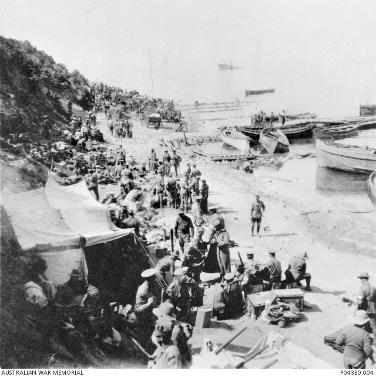 ANZAC Ambulance station on ANZAC cove Gallipoli 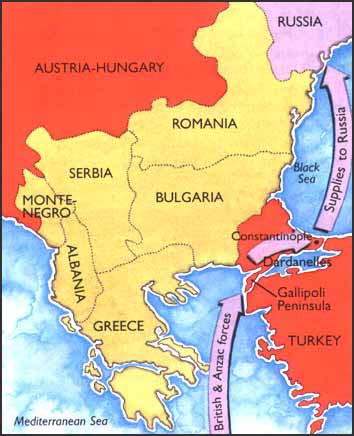 A map showing where the ANZACs attacked Turkey and the sea route through Turkey to Russia The first failed attacks on the Dardanelles: The first attacks on Turkey were naval attack by the British and the French troops. The first was initiated on the 19th of February, 1915 and was composed of long range bombardment of the coast. The Turkish stalled this first push with heavy fire and the push collapsed. The Turks, now aware of the importance of their land and their vulnerability, upped their defences and placed carefully laid mines and search lights that swept across the sea. Three months later on March 18th, 1915, 18 allied battle ships entered the strait but were met again by heavy Turkish fire including the undetected mines. Three ships were sunk that day by the Turks and three more were damaged. The Allies were now convinced that there was no way to get past the turkish gun batteries in the Dardanelles without taking control of the Gallipoli peninsula and taking over the areas where the guns were placed. Little did the allied forces know that the Turks had spent almost all of their ammunition in the attempt to push back the first two attacks and that they could have sailed right through with minimal damage. The ANZAC’s attempt After the failure of the first attempt to take over Turkey, the allied powers recruited the Australian and New Zealand forces to try and help take control of the Turkish sea routes. As They prepared plans for the massive landing of troops on Gallipoli’s shore, the Turks also raised their defences placing Ottoman troops where an attack would be most likely. When the ANZAC forces arrived on the 25th of April 1915 they were only met by a relatively small number of Turkish troops but more quickly arrived, stalling the ANZAC’s advance. 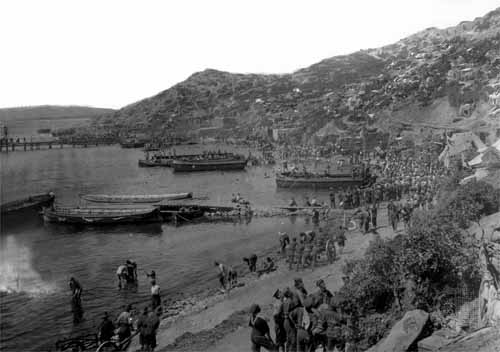 This photo clearly shows the harsh terrain that the ANZACs faced upon arriving at Gallipoli Evacuation After nine long months with little progress, the call was made to evacuate the remaining 105,000 allied troops. The first evacuation was from Suvla bay on the 7th of December 1915, the last troop to be evacuated left Helles on the 9th of January 1916. The evacuation was arguably the most successful part of the Gallipoli campaign and was quite innovative. It was led by the Australians who wanted nothing that wasn't in the best interest of their troops and hence there were no casualties at all. The allied forces had learnt a lot from their many previous mistakes and left carefully and quickly. The evacuation was so successful due to many innovations by the ANZACs one of which was the self firing gun which gave the illusion that the troops were still there. Despite their very successful evacuation, it was still to late for many of the allied forces, the campaign resulted in 250,000 casualties including 46,000 killed. The campaign also cost the Turks 250,000 casualties including 65,000 killed. | On April 25, 1915 The Australian and New Zealand Army Corp (ANZACS) landed on the shores of Gallipoli. The Gallipoli campaign resulted in 26,111 Australian casualties including 8,141 Australian deaths and was said to have no effect on the course of the actual war. But Why did Australia join the Gallipoli Campaign ? In around 1915, the war on the Western Front became locked in a stalemate. The plan (devised by Winston Churchill) was to take down Germany’s ally, Turkey. This plan became known as “The Gallipoli Campaign”. The objective was to attack Turkey while the enemy was distracted by the war on the Western front. The plan was to be executed by the Australian troops who were to gain control of the Gallipoli peninsula and the Dardanelles waterway. The troops would then advance into the Turkish capitol, Constantinople. The hope was that Turkey would then collapse due to the loss of their capital. The allies would then have control of the sea route to Russia (another of their allies) which would allow them to get supplies and troops to Russia. Gaining control of Russia would also allow an opportunity to attack Germany’s other ally, Austria-Hungary. 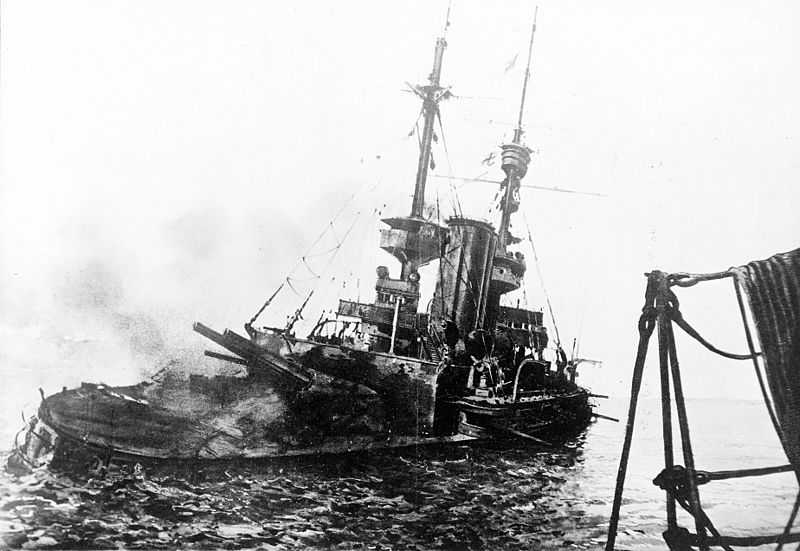 HMS Irresistible sinking in the Dardanelles after hitting a mine (taken from HMS Lord Nelson) 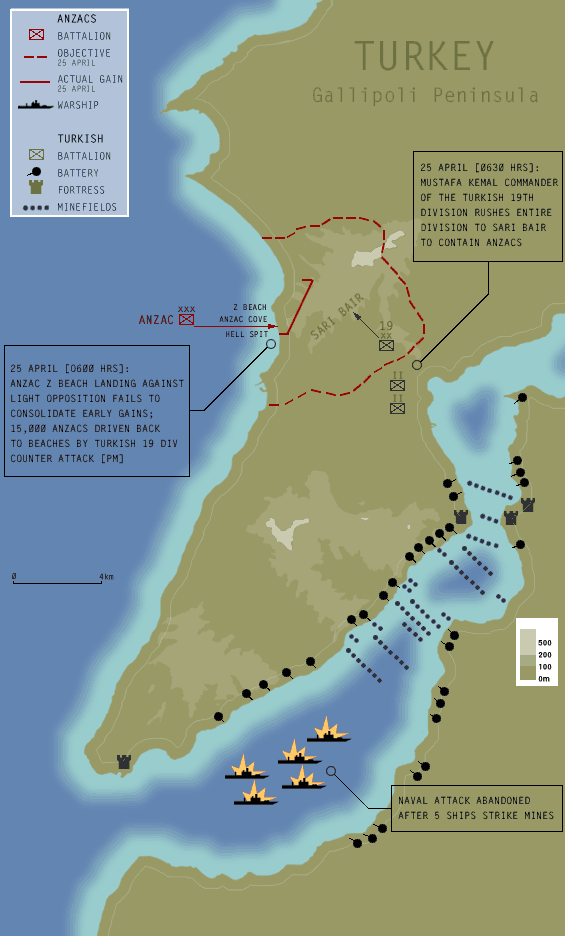 A map showing the initial attacks on the Dardanelles and the ANZACs attack Why did the attack fail? The first mistake made by the ANZACs was that they landed 2 kilometres north of their intended destination. This could have been because of navigational failures but even today, no one knows exactly why they landed where they messed up so bad. The location in which they landed was vastly different to the landscape they were prepared for. Rather than a relatively flat battle field, they were faced by steep cliff faces with Turkish machine guns firing down tom the tops of the cliffs. The ground was also very uneven and housed no cover from the incoming Turkish fire. This caused the ANZACS to scatter and neglect orders making them easy targets for the Turks. That day, only 900 meters of ground was gained and 2300 men were killed. After the initial landing it became increasingly harder to gain ground as more and more troops were being recruited by the Turks in an attempt to break the stalemate. On August the 6th, another wave of allies arrived at Sulva bay to help the ANZACs. This surprise attack on the Turks made much progress due to the lack of defences in the area they landed but delays and indecisive plans stalled their advance while Ottoman reinforcements arrived to hole up their defences. 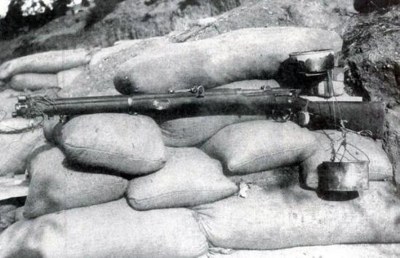 A self firing gun used by the ANZACS. In this photo you can clearly see the mechanism behind the automation of the gun. |